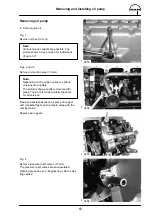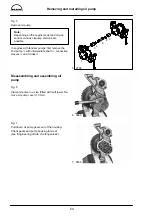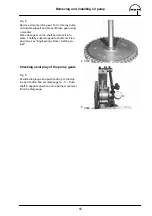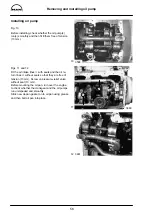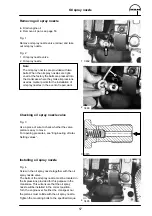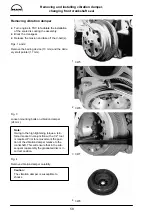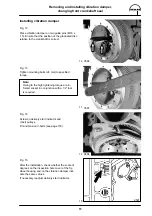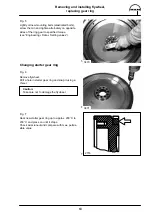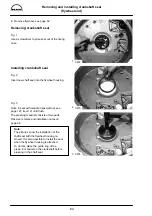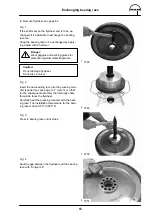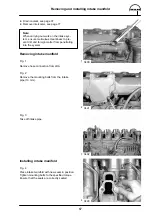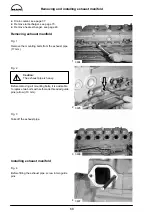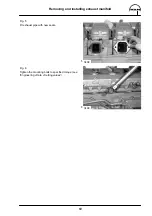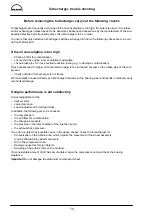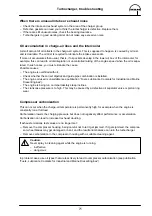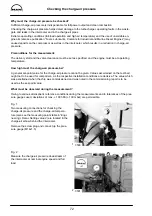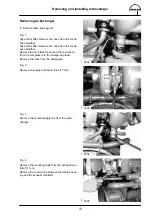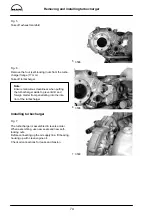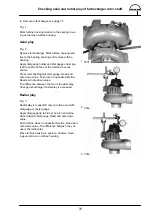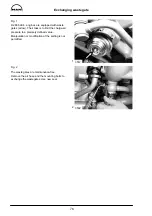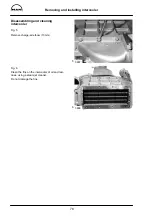
Crankshaft seals
66
General remarks on crankshaft seals
As a matter of fundamental principle only radial shaft seals made of polytetrafluor ethylene (PTFE), trade
name Teflon, are used.
PTFE seals can be easily distinguished from the former elastomer seals by their considerably wider and
flat sealing lip which is no longer pre-loaded by means of a tubular spring.
As a result of its relatively high initial stress the sealing lip curves inwards. For this reason PTFE seals are
supplied on transport sleeves. They must not be taken off the sleeves before they are needed so as to en-
sure that they can still be installed. Great care should be taken when fitting lip seals. Even the slightest
damage to the seal would result in leaks.
The sealing lip and the race of the flywheel must not be coated with oil or any other lubricants.
When installing a new seal always replace the race too.
Assembly instructions for crankshaft seals
D
The PTFE seal must be absolutely free of oil and grease when installed. Even the slightest traces of oil
on the race or the sealing ring cause leakage.
D
Before installing the race remove oil, grease and anticorrosion agent from it. All cleaning agents nor-
mally used in workshops can be used for this purpose.
D
A PTFE seal soiled with oil or grease is useless. Cleaning it is not permissible.
D
The PTFE seal must never be stored without the transport sleeve delivered with it. Even after a storage
period of only 30 minutes without the transport sleeve it looses its initial stress and becomes useless.
Summary of Contents for D 2866 LE 401
Page 1: ......
Page 17: ...Engine views D 2866 LE401 16...
Page 18: ...Engine views D 2866 LE401 17...
Page 19: ...Cross section of engine 18...
Page 20: ...Longitudinal section 19...
Page 124: ...123 Special tools...
Page 125: ...Special tools 124 2 3 4 5 6 7 9 1 8 6 1 6 2 6 3...
Page 129: ...Special tools 128 21 22 23 25 25 2 24 25 1 26 27 1 27 2 27 20 1 19 2 19 1 20 2 19 20...
Page 131: ...Special tools 130 29 28 30...
Page 138: ......


